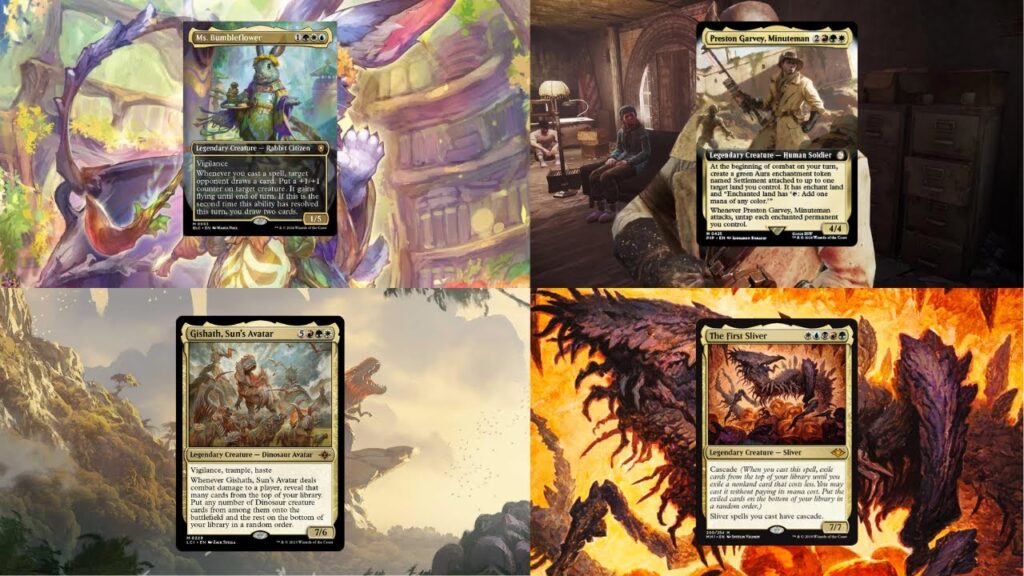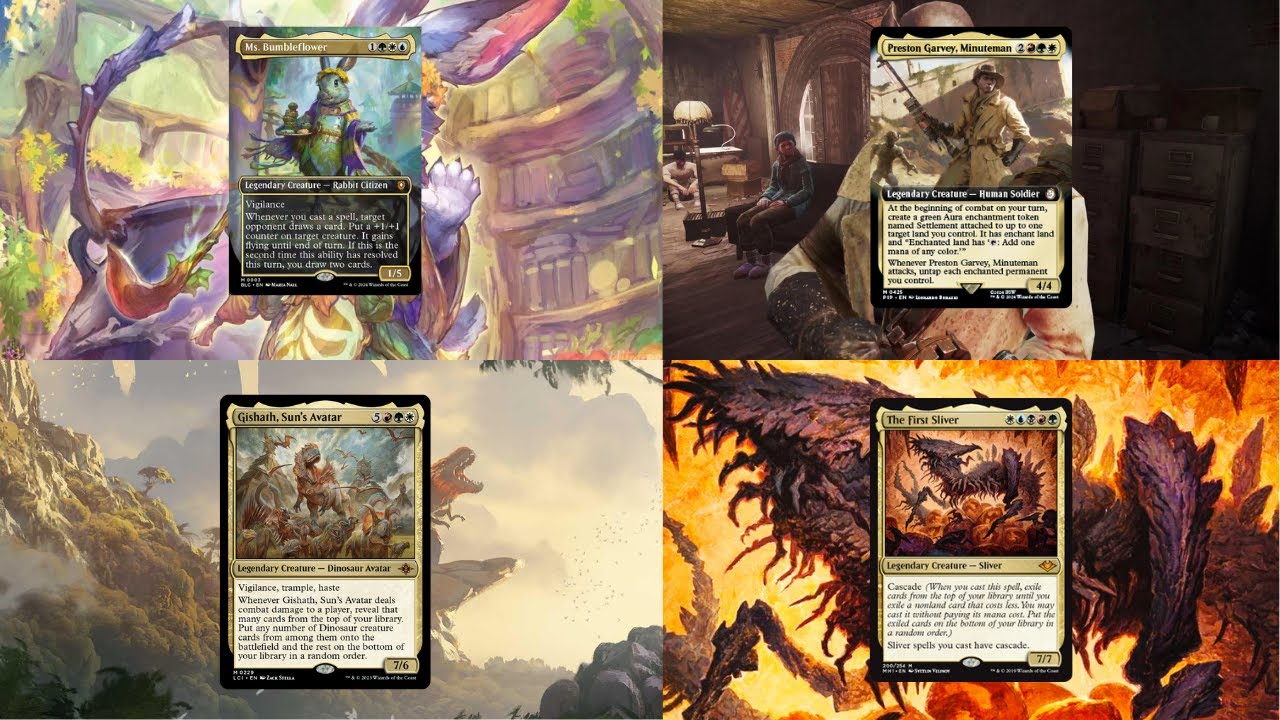
Unveiling Menace: Mastering the Magic The Gathering Rules
In the vast and intricate world of Magic: The Gathering (MTG), understanding the nuances of each keyword ability is crucial for both novice players and seasoned veterans. Among these abilities, Menace stands out as a potent force, shaping combat dynamics and influencing strategic decisions. This article delves into the core mechanics of Menace, exploring its rules, interactions, and strategic implications within the game. Whether you’re building a new deck or refining your combat tactics, mastering the Menace ability is essential for achieving victory.
Understanding the Core Mechanics of Menace
Menace is a keyword ability in Magic: The Gathering that modifies the requirements for blocking a creature. A creature with Menace can only be blocked by two or more creatures. This simple yet powerful effect can significantly alter the dynamics of combat, forcing opponents to commit multiple blockers to deal with a single attacking creature. Understanding the precise wording and implications of this rule is paramount to utilizing Menace effectively.
The Official Wording
The official rules text for Menace is straightforward: “This creature can’t be blocked except by two or more creatures.” This concise definition leaves little room for ambiguity, but it’s crucial to grasp how this rule interacts with other abilities and game mechanics.
Breaking Down the Rule
Let’s break down the implications of this rule:
- Minimum Blockers: An attacking creature with Menace requires at least two creatures to block it. One blocker is insufficient.
- Multiple Blockers Allowed: While a minimum of two blockers is required, there is no upper limit. An opponent can assign three, four, or even more creatures to block a single creature with Menace.
- Blocking Restrictions: The Menace ability only affects the number of blockers required. It does not influence other blocking restrictions or abilities. For example, a creature with Menace can still be blocked by a creature with flying, if applicable.
Strategic Implications of Menace
The Menace ability offers significant strategic advantages in combat. It forces opponents to make difficult choices about how to allocate their blockers, potentially opening up opportunities for other attackers to slip through unblocked. Here are some key strategic considerations:
Forcing Unfavorable Blocks
Menace excels at forcing opponents to make unfavorable blocks. By requiring at least two blockers, it can deplete an opponent’s defenses and leave them vulnerable to subsequent attacks. This is particularly effective against opponents with limited creatures or creatures with valuable abilities.
Creating Combat Advantage
A creature with Menace can create a combat advantage by removing key blockers from the equation. If an opponent is forced to use two of their best creatures to block a single attacker with Menace, they may be left with insufficient defenses to deal with other threats. This can be especially potent in aggressive decks that aim to overwhelm the opponent with a flurry of attacks.
Synergizing with Other Abilities
Menace synergizes well with other combat-related abilities, such as:
- Deathtouch: Combining Menace with Deathtouch can be devastating. The creature with Menace and Deathtouch only needs to deal one damage to each blocker to destroy them, making it a highly efficient attacker.
- Trample: Trample allows excess damage to be dealt to the defending player. If a creature with Menace and Trample is blocked by two creatures, any damage beyond what’s needed to destroy the blockers is dealt to the opponent.
- First Strike/Double Strike: These abilities allow a creature to deal damage before blockers. If a creature with Menace and First Strike can destroy one blocker before it deals damage, it significantly reduces the opponent’s chances of surviving the combat.
Common Misconceptions and Clarifications
Despite its relatively straightforward rule, Menace is sometimes misunderstood. Here are some common misconceptions and clarifications:
Menace Does Not Guarantee Unblocked Attacks
It’s important to remember that Menace does not guarantee that a creature will be unblocked. An opponent can still block with two or more creatures. The primary benefit of Menace is that it forces opponents to allocate their blockers strategically, potentially opening up opportunities for other attackers.
Menace Does Not Prevent Blocking Restrictions
Menace only affects the number of blockers required. It does not override other blocking restrictions. For example, if a creature has an ability that prevents it from being blocked except by creatures with flying, Menace will not override this restriction. [See also: Understanding Flying in Magic The Gathering]
Menace and Multiple Combat Steps
In a game with multiple combat steps, such as those created by cards like “Aurelia, the Warleader”, the requirements of Menace apply to each combat step. The opponent must block with at least two creatures during each combat step if they wish to block the creature with Menace.
Examples of Menace in Action
Let’s consider a few examples to illustrate how Menace works in practice:
Example 1: Simple Combat
Player A attacks with a 3/3 creature with Menace. Player B controls two 2/2 creatures. Player B must block the 3/3 with both 2/2 creatures to prevent the damage. If Player B only had one creature, the 3/3 would go unblocked.
Example 2: Menace and Deathtouch
Player A attacks with a 2/2 creature with Menace and Deathtouch. Player B controls two 3/3 creatures. Player B blocks with both creatures. The 2/2 with Deathtouch deals 1 damage to each blocker, destroying both. This is a very efficient trade for Player A.
Example 3: Menace and Trample
Player A attacks with a 4/4 creature with Menace and Trample. Player B controls two 1/1 creatures. Player B blocks with both creatures. The 4/4 deals 1 damage to each blocker, destroying them. The remaining 2 damage is dealt to Player B.
Cards Featuring Menace
Numerous cards across Magic: The Gathering’s history feature the Menace ability. Some notable examples include:
- Goblin Freerunner: A common creature that provides early-game aggression.
- Murderous Redcap: A powerful creature that can deal damage to a creature or player upon entering the battlefield.
- Stormfist Crusader: A strong attacker that also provides card advantage.
These are just a few examples, and many other cards feature Menace in various colors and strategies. [See also: Exploring Red Decks in Magic The Gathering]
Deckbuilding with Menace in Mind
When building a deck that utilizes Menace, consider the following:
- Aggressive Strategy: Menace is best suited for aggressive decks that aim to quickly reduce the opponent’s life total.
- Support Cards: Include cards that support your aggressive strategy, such as pump spells, removal spells, and card draw.
- Synergies: Look for cards that synergize well with Menace, such as Deathtouch, Trample, and First Strike.
The Evolution of Menace in Magic: The Gathering
Menace, as a keyword ability, has become a staple in Magic: The Gathering, consistently appearing in various sets and formats. Its strategic importance in combat dynamics ensures its continued relevance in the game. Initially introduced to streamline the concept of unblockable creatures, it has become a balanced and versatile ability, influencing deck construction and strategic decision-making.
Early Appearances
Prior to the formal keyword, the concept of a creature requiring multiple blockers existed. However, the introduction of Menace provided a concise and easily understandable mechanic for representing this ability. This standardization enhanced clarity and ease of play.
Impact on Game Design
The inclusion of Menace has allowed designers to create a wider range of creatures with varying levels of combat effectiveness. By strategically assigning Menace to specific creatures, they can influence the pace of the game and encourage diverse playstyles.
Conclusion: Mastering Menace for Victory
Menace is a powerful and versatile keyword ability in Magic: The Gathering that can significantly impact combat dynamics. By understanding its rules, strategic implications, and synergies with other abilities, players can leverage Menace to gain a competitive edge. Whether you’re a casual player or a seasoned competitor, mastering Menace is essential for achieving victory on the battlefield. So, embrace the challenge, refine your strategies, and unleash the power of Menace in your next game of Magic: The Gathering. Understanding these Magic The Gathering rules will improve your gameplay. Menace is a key ability to understand. The power of Menace in combat is significant. Learning all about Menace is beneficial. Menace can change the tide of battle. Use Menace to your advantage. Many strategies involve Menace. Menace requires careful consideration. Explore decks built around Menace. The impact of Menace is undeniable. Menace synergizes with other abilities. Menace is a valuable asset. You should master Menace. Decks including Menace are often strong. Learn to play with and against Menace.

